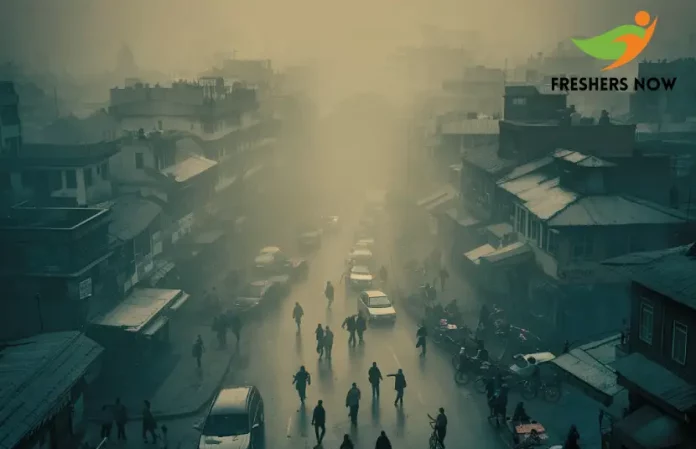
Kathmandu Tops the List of Cities With ‘Unhealthy Air’ in the World: Kathmandu, the Capital City of Nepal, has recently gained international attention for topping the list of cities with the most ‘unhealthy air’ in the world. Therefore, this alarming revelation has sparked concerns among environmentalists, health experts, and policymakers globally. In this article, we delve into the factors contributing to Kathmandu’s air pollution crisis and its implications for public health and the environment.
Kathmandu Tops the List of Cities With ‘Unhealthy Air’ in the World
Kathmandu’s designation as the city with the most ‘unhealthy air’ underscores the pressing need for concerted action to tackle air pollution at local, national, and global levels. By addressing the root causes of pollution, strengthening regulatory frameworks, and promoting sustainable development practices, we can strive towards a healthier and more sustainable future for Kathmandu and beyond. Hence, follow the below sections for knowing in-depth details regarding Kathmandu Tops the List of Cities With ‘Unhealthy Air’ in the World.
Understanding the Air Quality Crisis in Kathmandu
Geographic and Meteorological Factors
- Kathmandu’s geographical location, nestled in a valley surrounded by mountains, exacerbates its air pollution woes. So, the city’s topography hinders the dispersion of pollutants, trapping them within the valley. Additionally, meteorological conditions such as temperature inversions often lead to stagnant air, further aggravating pollution levels.
Urbanization and Population Growth
- Rapid urbanization and population growth in Kathmandu have significantly escalated pollution levels. Meanwhile, the proliferation of vehicles, industrial activities, construction projects, and the burning of solid fuels for cooking and heating have become major sources of air pollution in the city.
Inadequate Infrastructure and Regulatory Framework
- Kathmandu suffers from inadequate infrastructure and a weak regulatory framework to address air pollution effectively. Moreover, the lack of enforcement of environmental regulations, insufficient monitoring systems, and limited investment in clean energy initiatives have perpetuated the problem.
Health Impacts of Poor Air Quality
Respiratory and Cardiovascular Diseases
- The hazardous air quality in Kathmandu poses serious health risks, particularly for vulnerable populations such as children, the elderly, and individuals with pre-existing respiratory or cardiovascular conditions. Therefore, prolonged exposure to air pollutants increases the incidence of respiratory infections, asthma, bronchitis, and cardiovascular diseases.
Premature Mortality
- Studies have linked Kathmandu’s poor air quality to premature mortality, with air pollution-related illnesses claiming thousands of lives annually. So, toxic cocktail of pollutants, including particulate matter (PM2.5), nitrogen dioxide (NO2), sulfur dioxide (SO2), and ozone (O3), contributes to life-threatening health complications.
Addressing the Air Pollution Crisis
Policy Reforms and Enforcement
- Urgent policy reforms and stringent enforcement mechanisms are imperative to combat Kathmandu’s air pollution crisis. Meanwhile, authorities must prioritize the implementation of emission standards, promote cleaner transportation modes, regulate industrial emissions, and incentivize the adoption of renewable energy solutions.
Public Awareness and Participation
- Raising public awareness about the health impacts of air pollution and fostering community participation are crucial aspects of mitigation efforts. Educational campaigns, advocacy initiatives, and citizen engagement programs can empower individuals to take proactive measures to reduce their carbon footprint and advocate for sustainable policies.
Follow Freshersnow.com for latest updates.
| You can Also Check |
| Current Affairs |



